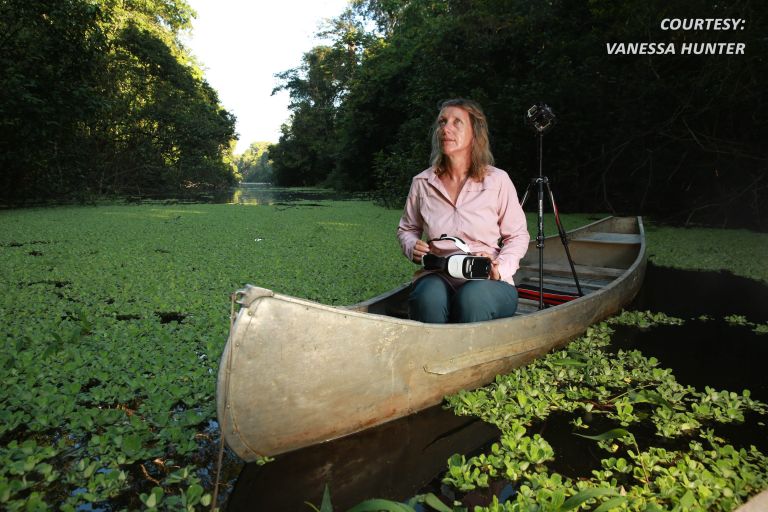For the second time in less than a year, ACEMS Deputy Director Kerrie Mengersen is heading to the Amazon jungle in her efforts to combine mathematics and statistics with the latest virtual reality technology to try to protect and save the jaguar population.
Professor Mengersen will travel to Peru in August to continue ACEMS' conservation work with the Lupunaluz Foundation.
"We are much more aware of the urgency of our project," said Prof. Mengersen. "The jungle is disappearing at an alarming rate."
Researchers from ACEMS, the Queensland University of Technology (QUT), and the Lupunaluz Foundation completed a four-week expedition to some of Peru’s deepest jungle regions late last year. But they did more than just travel to the Amazon. They brought it back with them for others to see, in the form of immersive virtual environments.
"We have an international panel of experts who are 'in the jungle' as we speak," said Prof. Kerrie Mengersen, a professor of statistics at QUT.
VIDEO: Prof Kerrie Mengersen talking about Jaguar Project
The aim of this next trip is two-fold. The team will be trialling even more 360-degree camera technology, possibly even using planes and drones to try to get a view from above.
The second goal of the trip is to continue to work with the people who live there and show them how they can help.
"A major part of the trip is to 'skill up' the local indigenous people to start monitoring their own environment, including the jungle and animals that live in it," said Prof Mengersen. "This is essential if we are to have any hope of conserving jaguars."
VIDEO: Conference Presentation by Kerrie Mengersen on Jaguar Project
The ACEMS team that traveled to Peru late last year is continuing to work up mathematical and statistical models about the jaguar population.
So far, the team has developed several main models, including a spatial model for jaguar presence. Another is a population dynamics model, which shows the sensitivity of jaguar numbers to impacts such as deforestation, hunting and climate change.
“Climate change is the key,” says Professor Burrage, an ACEMS Chief Investigator at QUT who traveled to Peru last year. “In the last few years the effects of climate change (drought and flood) have become more pronounced on the animals that live in the Amazon. That means small changes in government or national reserve policies, hunting practices, and external factors such as mineral exploration can have much more lasting impacts than would otherwise be the case.”
Meet the Team for the Jaguar Project
This next trip will continue to focus on two main conservation regions in Peru, Imiria and Pacaya Samiria, and the region connecting them. It will be turtle nesting season, so the team is hoping to see jaguars who may prey on some of the large turtles.
Professor Mengersen says she's overwhelmed by the support the project has been getting, especially in Peru.
"The level of engagement from local people and government officials in Peru has been astounding," she said. "We have also been encouraged by the strong interest shown in the international community in our project."
If you are interested in learning more about the project, or want to help, you can email info@vis.stats.technology.
MEDIA CONTACT: Tim Macuga, ACEMS Media & Communications Officer, 07 3138 6741, Timothy.Macuga@qut.edu.au

